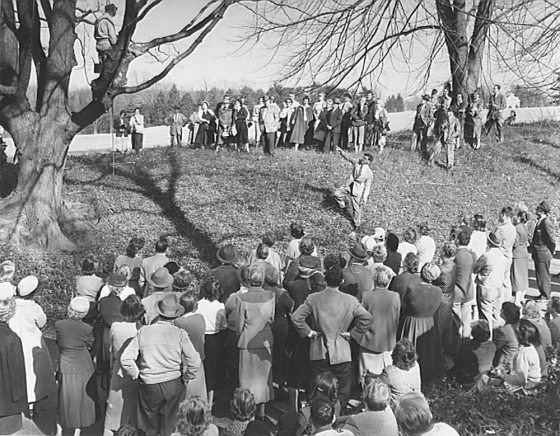The late 1950s and early 1960s saw tremendous change at Longwood, comparable to the building program of the 1920s except the emphasis was now on public comfort and education.
New gardens, a plant nursery, and an experimental greenhouse were established. A Desert House and 13 outdoor waterlily pools were constructed. Guide maps, publications, and brochures were printed. New greenhouses devoted to tropical plants opened. A plant breeding program was initiated. And a new visitor center with a shop, auditorium, and 1,000-car parking lot were added.

The response to a few public classes and lectures in 1956 was so encouraging that an evening lecture series and short courses for the public were developed. Tens of thousands of amateur enthusiasts and professional horticulturists have attended these programs over the past 50 years. A newly created Department of Education oversaw major improvements to visitor services and education as well as to the Gardens’ public display facilities and to the science of horticulture as practiced at Longwood.
Professional student training began in 1956 when the first international student arrived from Norway to work in the Gardens. A summer student program in conjunction with the University of Delaware began two years later and a specialized reference library was established the same year.
Besides the horticultural arts, the performing arts had a place in the new scheme, just as they had for Pierre du Pont. Public organ concerts and evening musical events were regularly scheduled and the Open Air Theatre was used more than ever. Summer evening displays of the famous Main Fountains were offered on a repeated basis beginning in 1957.
Throughout all of these changes to convert Longwood into a garden with maximum public appeal, the grounds retained the dramatic charm of Mr. du Pont’s creation.